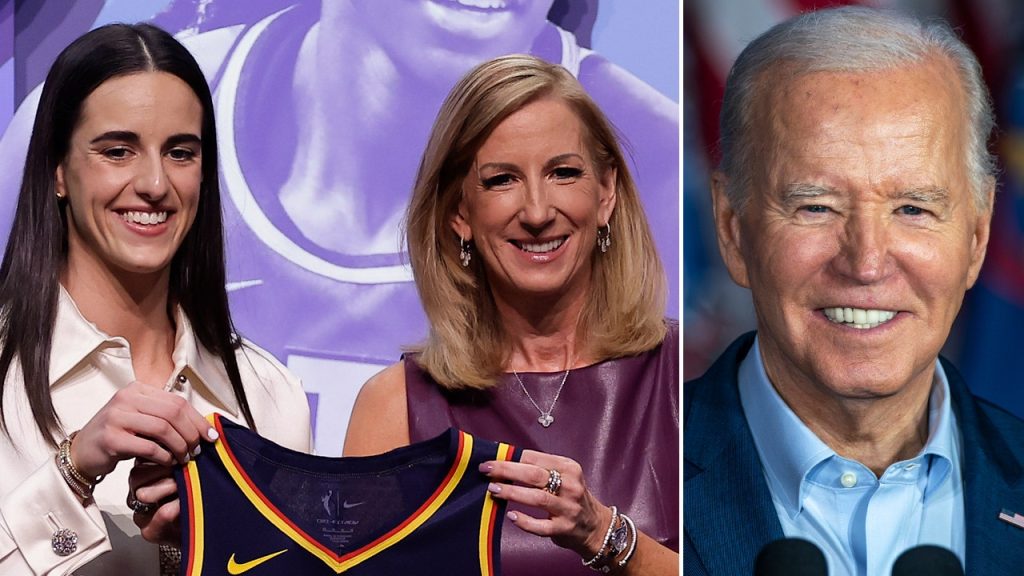President Biden recently called for women in sports to be paid their fair share, highlighting the issue of gender pay disparity after Caitlin Clark was selected as the No. 1 overall pick in the WNBA draft. Biden emphasized the need to give women the same opportunities as men and ensure that they receive the compensation they deserve. The draft selection of Clark and other top players sparked a debate about WNBA salaries, with Spotrac providing information on rookie contract numbers and some of the league’s highest-paid players.
According to Spotrac, Clark is expected to sign a four-year, $338,056 deal with incremental increases in salary each year. Some of the WNBA’s highest-paid players, such as Arike Ogunbowale, Kahleah Copper, and Jewell Loyd, earn nearly $242,000 per year. Despite calls from athletes like Russell Wilson for female athletes to be paid more, there are challenges related to revenue sharing in the WNBA that need to be addressed for significant changes to occur. Spotrac’s Michael Ginnitti noted that while overall revenue in the league is increasing, players’ ability to earn is still limited by current structures.
In addition to their WNBA salaries, players like Clark have the opportunity to earn endorsement money from NIL deals. Clark has deals with companies like State Farm, Panini America, and Nike, allowing her to capitalize on her marketability and success as a top draft pick. The WNBA has seen growth in viewership and attendance in recent years, with the 2023 season being the most watched regular season in 21 years, averaging 505,000 viewers across ESPN, ABC, and CBS. Attendance also increased by 16% compared to the previous year, with an average of 6,615 fans per game and a total attendance of 1,587,488.
President Biden’s remarks on gender pay equity in sports come at a time when female athletes are increasingly pushing boundaries and inspiring audiences. The spotlight on women’s sports and the salaries of top athletes like Clark and others in the WNBA highlights the ongoing debate about fair compensation for female athletes. While the WNBA is experiencing growth in revenue and popularity, discussions about revenue sharing and player compensation remain central to addressing the gender pay gap in professional sports. The support from high-profile figures like Biden, Wilson, and others, along with increased fan interest and endorsement opportunities, signals a potential shift towards fairer compensation for female athletes in the future.


